Fumes #427
 Wednesday, January 9, 2008 at 01:59PM
Wednesday, January 9, 2008 at 01:59PM by Peter M. De Lorenzo
Audi's Big Leap demonstrates what "direct transference of racing technology to production applications" really means.
Detroit. Audi is set to unveil a concept version of its new R8 sports car in Detroit next Sunday that will be powered by a de-tuned version of its 24 Hours of Le Mans-winning V-12 turbodiesel. The R8 turbodiesel concept will have a 500hp, V-12, 6.0-liter turbodiesel engine based on the 650hp, 5.5-liter, V-12 diesel found in Audi's all-conquering R10 prototype racing cars. By testing the waters with this concept for a production turbodiesel sports car, Audi is distancing itself from the world's other manufacturers when it comes to pioneering and proving new technologies through racing and then applying that technology to its production cars.
Right now, there are exactly three other manufacturers in the world besides Audi that actually take lessons learned from racing and apply them directly to their production cars. The first is Ferrari, whose production cars bristle with lessons learned from their F1 program, and the second (surprisingly enough) is GM, which uses lessons learned from its highly successful Corvette Racing program to better the production versions of its street counterpart. And Porsche gets an honorable mention for its continuing 911 racing development program, which has yielded the GT3, GT3 RS and the GT2 Turbo.
But Audi's move with its diesel racing program and a possible diesel supercar for production is bolder still, considering the frothing-at-the-mouth frenzy going on right now with Green technologies, the environment and the auto industry, with the automobile manufacturers becoming the poster children/whipping boys for all of the world's environmental problems.
I consider Audi's move to be The Big Leap, one that firmly establishes it as the front runner in the "direct transference of racing technology to production applications" business.
Memo to the rest of the world's manufacturers: The Game has changed. If you're not operating a racing program that is proving Green technologies for production applications, then you're going to be left behind down the road when it really matters.
And Audi's technical leap accomplishes two other things too.
1. It makes the obscene amounts of money that the manufacturers are pouring into NASCAR seem really silly.
And 2. It adds tremendous cache and credibility to the American Le Mans Series and emboldens the future of the 24 Hours of Le Mans.
Publisher's Note. Before we get geared up for another racing season, this week in Fumes we're continuing our look back at the Golden Age of American racing, courtesy of the Ford Racing Archives. When we last left you, we had Dan Gurney and A.J. Foyt beaming after winning the 1967 24 Hours of Le Mans. This week, we have some more compelling photos for you. - PMD
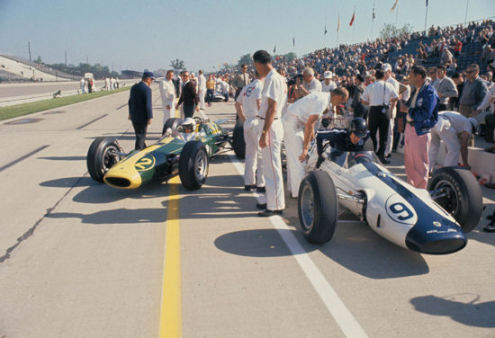
(Ford Racing Archives)
The Indianapolis Motor Speedway, 1963. Jim Clark (No. 92 Lotus-Ford) and Dan Gurney (No. 91 Lotus-Ford) prepare to go out for practice on the famed oval.
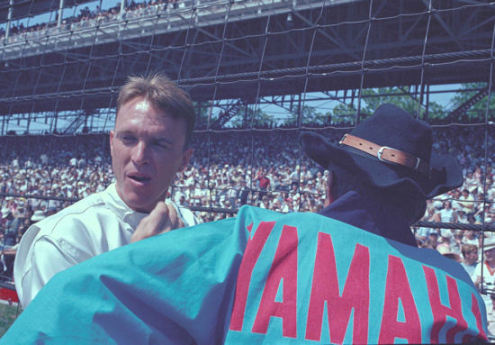
(Ford Racing Archives)
The Indianapolis Motor Speedway, May 1965. Dan Gurney, driver of the No. 17 Yamaha Lotus-Ford, talking to Carroll Shelby (right) before the Indianapolis 500. Gurney's Lotus was powered by the famous Double Overhead Cam 255 cubic inch Ford V8. He qualified 3rd on the front row (with a four-lap average of 158.898 mph), but finished 26th when the engine failed.
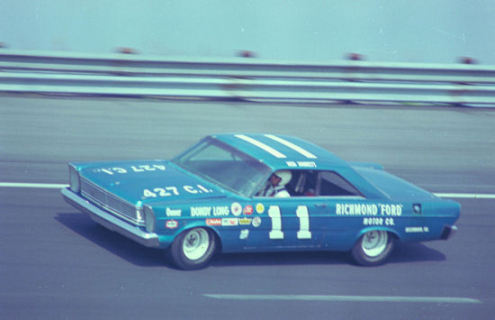
(Ford Racing Archives)
Back when NASCAR "stock" cars were actually based on production automobiles, Ned Jarrett hustles his 427 Ford around the Charlotte Motor Speedway during the Charlotte 400 in 1965. Jarrett would finish 4th that day.
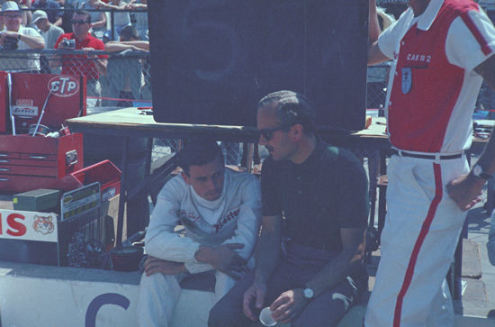
(Ford Racing Archives)
The Indianapolis Motor Speedway, 1965. The great Jim Clark, driver of the No. 82 Lotus-Ford, and Colin Chapman sitting in the pits before the start of the Indy 500. Clark would win going away that day.
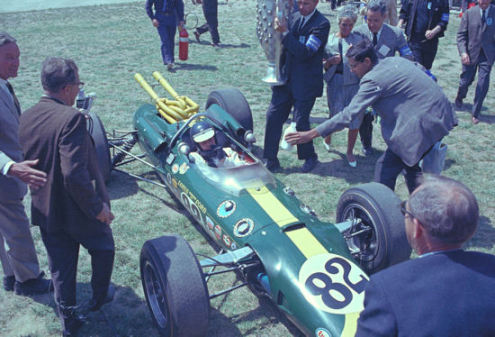
(Ford Racing Archives)
Jimmy Clark pulls his Lotus "Powered by Ford" into a decidedly low-key Victory Lane at the Speedway (compared to today), after winning the 1965 Indianapolis 500. You can see the guy to the right getting ready to hand Clark the traditional winner's bottle of milk.
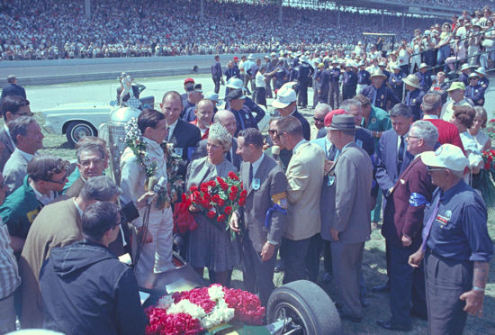
(Ford Racing Archives)
Victory Lane, the Indianapolis Motor Speedway, circa 1965. Jim Clark has just received the Borg-Warner Trophy for winning the Indianapolis 500 at a record average speed of 150.686 mph.
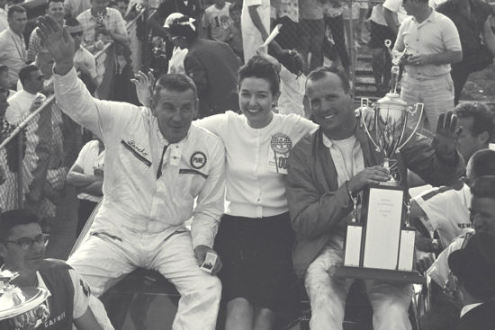
(Ford Racing Archives)
Victory Lane, Atlanta, 1965. Glen Wood of the Wood Brothers (lower left), Marvin Panch (left), Miss Atlanta 500 (middle) and A.J. Foyt (right) celebrate "their" win in the Atlanta 500. Panch drove the No. 21 Wood Brothers Augusta Motor Sales Ford, but during the race, he became ill. Since A.J.'s No. 41 Ford had already expired, the Wood Brothers asked A.J. to finish the race for them. He did, and sure enough, he won. Panch was credited with the victory. That's quite an outfit the race queen is wearing!




